Talking Parrots: Species Descriptions and Training Tips
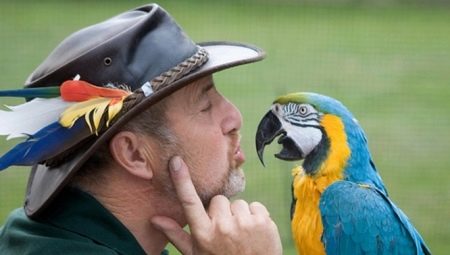
Each of us would like to acquire another in the form of a talking parrot. They are not only bright, intelligent and unusually charming birds, but they are also capable of reproducing our speech exactly to the intonation and the slightest sound. In this article we will talk about talking parrots, get acquainted with the most popular varieties, as well as recommendations for raising and training them.

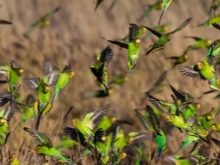

Peculiarities
There are a large number of representatives of parrots in the world, but only a few, due to the peculiarities of the structure of the tongue and larynx, can imitate human speech. In their natural habitat, parrots use fragments of songs from other birds to communicate with each other. If the parrot is outside the flock and constantly hears repetitive sounds, it is highly likely that he will remember them and learn to reproduce them.
Of course, not every parrot is endowed with this talent. Below we will talk about the most famous species that can copy our language.
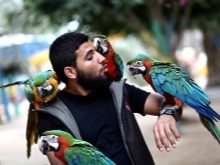

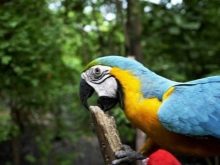
Views
At the moment, there are 5 varieties of parrots, which can be more or less well taught to talk.
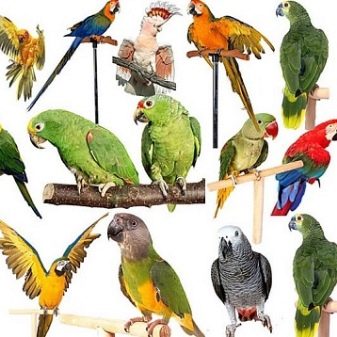
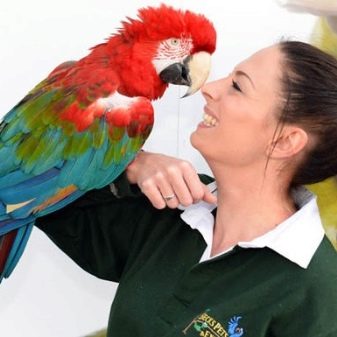
Cockatoo
One of the most talented breeds in teaching human speech. It is also considered relatively expensive and rare for private bird breeders. It features a massive curved beak, a large wingspan, and a characteristic crest in the parietal zone. A raised crest, as a rule, can denote a range of emotions: from excitement to surprise and fear.
Among his family, he is considered a real long-liver. In nature, individuals can live up to 95 years, depending on the species. Most cockatoo species are large birds - up to 85 cm in length, their wingspan is up to 90 cm, and the weight of an adult is up to 1.1 kg.The crest is large and long, it can be either thin or wide.
According to the color of plumage and tuft, these birds differ in variety: from black to tangerine and pale pink shades, depending on the species.
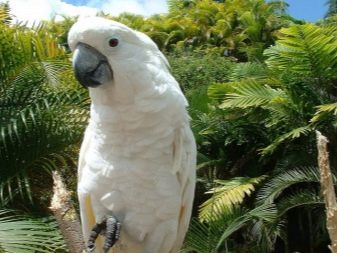
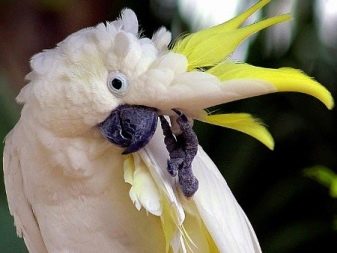
Some species of the breed live throughout Australia and New Guinea, some species settle on the islands of the nearest archipelagos. They prefer to build nests either in trees, or on rocks and in mountainous areas. They feed mainly on fruits of trees, seeds, insects and larvae. Recently, due to the reduction of natural habitats, some species of cockatoos are threatened with extinction. At the same time, they are considered pests in Australia, as they like to devastate entire fields.
Cockatoo are extremely intelligent and talented, they can speak well. (although they remember no more than a hundred words), extremely attached to the owner and become full-fledged family members. Besides speaking talents, love to be naughty and play, dance to the music (have excellent ear for music). It is this type of parrot that is most often the highlight at circus shows.
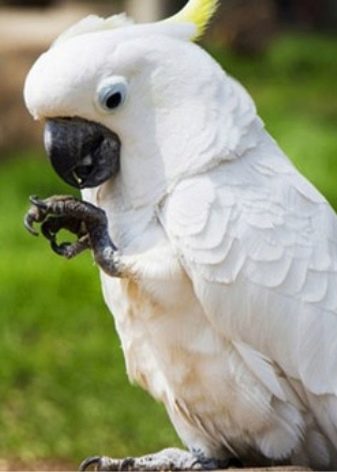
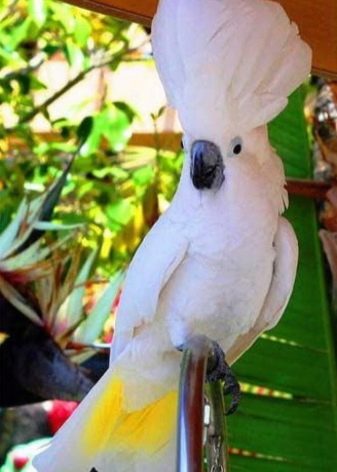
In a frustrated and depressed state, a bird can cause significant inconvenience. Loud, sharp cries, disheveled plumage, a tendency to bite - all this indicates a bad mood of the bird. That is why this variety not recommended for families with small children, these birds are extremely vindictive and can harm a child until you see.
Despite his ambiguous and capricious nature, he is very bad at parting with the owners. The species is prone to depression and plumage plucking.


Macaw
Macaw is considered a typical representative of talking parrots, it is his image that each of us represents when the word "parrot" is mentioned. Birds of this species differ from others in their variegated, bright and extraordinary color, relatively large size, as well as a long black beak. External characteristics: a large long body up to a meter, the limbs are incredibly strong (black), the wings are medium - up to 40 cm, their span reaches a meter. The tail is rather long and narrow - up to 55 cm. The weight of an adult can vary depending on the species, food, breeding conditions.
In nature, it lives mainly in South America (Panama, Brazil). The habitat is most often represented by dense tropical forests with a lot of trees, greenery, an abundance of fruits and water. The diet includes fruits, vegetables, grains, plant roots, and some herbs.
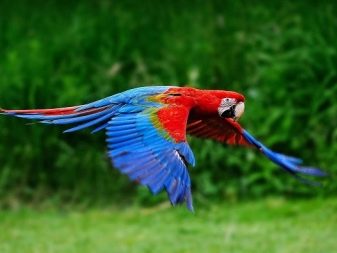
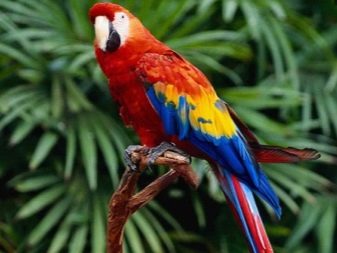
At the moment, 6 varieties of macaw are known that can, with less or more success, be trained and trained: red, yellow-necked, green-winged, blue-yellow, soldier's, chestnut-fronted. Each of these species can potentially be trained to imitate human speech.
Despite its highly developed intelligence and flamboyant plumage, the macaw is not a particularly talented conversationalist. In a lifetime, an individual, even with regular training, can rarely learn more than 50 words or phrases. However, interestingly, macaw phenomenally accurately reproduces individual sounds: barking, meowing, singing of other birds. The species is considered friendly and gullible, but loves free space very much.
An ordinary tight cage is not suitable for her; here you need a full-fledged aviary with a large number of perches and toys.
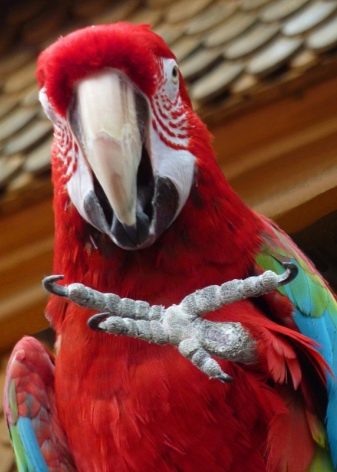

Jaco
A beautiful, intelligent and incredibly charming variety of talking parrots. Among his family, it is considered one of the most talkative and capable of learning. Outwardly, they differ from other species in gray or pale blue color, the absence of a crest, as well as yellow eyes and a short tail with bright red plumage. From a distance, the variety can be confused with the common street pigeon.
It is not considered the largest variety in size, but much larger in size than budgies and lovebirds.The total body length can be up to 40 cm, the wings are small - up to 25 cm, their span - up to 70 cm. As already mentioned, the tail is small and short - up to 10 cm in length. The eyes are yellow. The bill is massive, sharp, bent down, black. The limbs are massive, gray or whitish in color. On the plumage itself, you can rarely find a red or bluish tint.
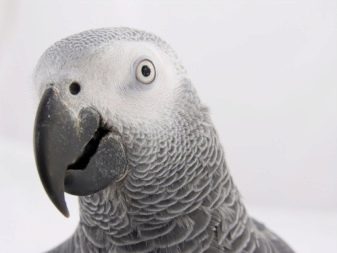
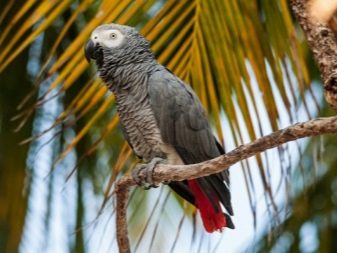
The average life expectancy in the natural environment can reach 60-70 years, in captivity - up to 50 years. Some regions of North Africa are considered the homeland of the variety. According to their habitat, they prefer extensive woodlands of deciduous forests. The diet is varied: mostly fruits, their kernels, seeds, roots, some herbs.
Jacques trust people, easily adapt to a new habitat, quickly get used to it and recognize faces. They are extremely talented at memorizing not only words, but also whole phrases - they are able to learn them up to 1000 in a lifetime. By nature, they can be capricious and aggressive, extremely jealous of children and other pets, as they like to occupy the main position in the family.


An individual should be taught to speak from a very young age. The older the bird, the more difficult it will be for it to get used to the new owner and learn some words. The fact is that the past and current owners almost certainly pronounce separate phrases and words with different arrangements and intonations, which for a parrot is something like retraining into another, completely new language.
The bird is quite rare and expensive, the price of individual individuals can reach tens of thousands of dollars. She also needs a lot of free space, a spacious cage, an abundance of toys and perches.

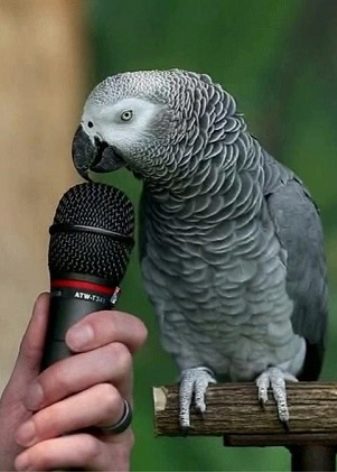
Corella
The bird is considered one of the most active and social species among parrots (it is a species of cockatoo). Like all members of its family, it has a characteristic crest in the parietal region and a massive curved beak. The main difference from all other parrots is the presence of specific cheeks with orange or red plumage.
The handcrafted cockatiel is neither large nor long. The length of an adult rarely reaches 35 cm (including the tail), the weight is also small - up to 100 grams. The breed is considered the smallest in its family after the pink cockatoo (Gala). In color, the male has a bright yellow head, and the female has a gray shade. The male's cheeks are orange and bright, while the female's are yellowish and pale.
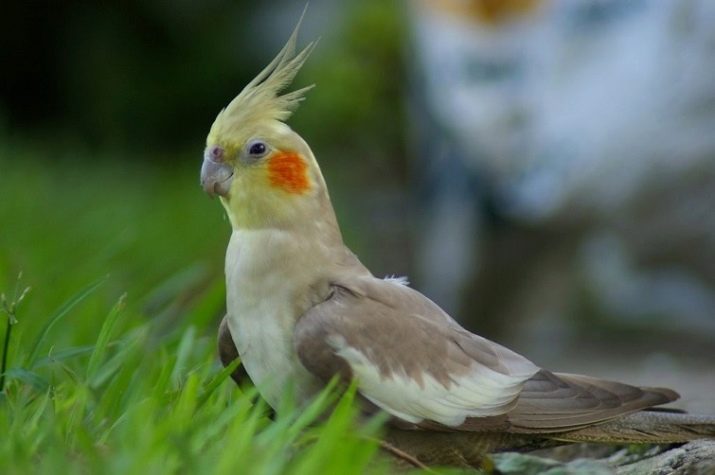
In their natural environment, you can find them in the shrouds and steppes of Australia; they prefer to nest at low altitudes near rivers and forests. It feeds on eucalyptus nectar, fruits and seeds; at unfavorable times, animals appear in the diet in the form of midges, insects and larvae.
The chances that the cockatiel you bought will have a great talent in colloquial human speech is extremely small. Usually this species of birds does not memorize more than 30-40 words in a lifetime. She learns with interest, but rather slowly.
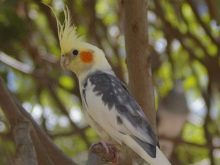
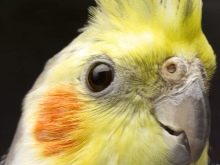
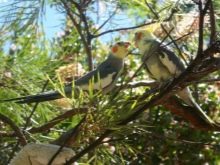
Unlike other species, it does not need painstaking care, is picky about food. He is very attached to the current owner, loves to play and be naughty, loves to chat and twitter incessantly, which over time can cause a lot of trouble. The bird has a pleasant, but rather harsh voice that your children or neighbors may not like.
The bird does not belong to aggressive breeds, but sometimes it wants to be alone. Usually this is indicated by the fact that the bird does not want to go into your arms. So that the bird does not get bored during your absence, it makes sense to leave the radio on at home or just turn on music on your computer. Then the bird will feel protected and will not get bored.
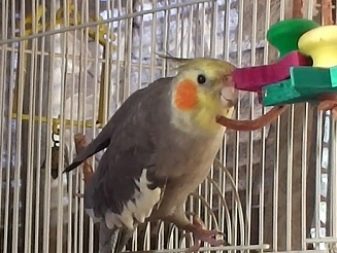
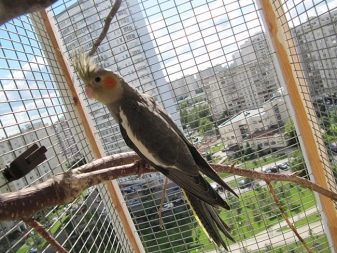
Budgerigars
The most common speaking type of parrot, it can be found at every breeder.It is distinguished by its small size and variegated, bright and wavy color with a predominance of blue, green, pink and red shades.
In terms of size, it is inferior to many from its family: the length of an adult bird rarely reaches 22 centimeters, the wings are up to 10 cm, the tail is also small and extremely thin - up to 10 cm in length. By weight, it is considered one of the lightest varieties - no more than 50 grams. The upper part of the beak is dominant, long, bent straight down. In color, the beak is usually yellowish or grayish, the nails are pink or white, gray (small, thin, not massive).
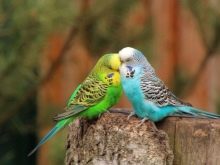
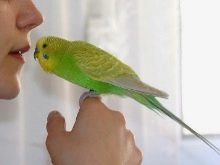

The homeland and current habitat is considered the entire territory of Australia, as well as some adjacent islands. In nature, it can live up to 20 years, moves either in pairs or in large flocks of up to several hundred individuals. In terms of habitat, it prefers steppe and flat areas with a small number of trees. In captivity, life expectancy rarely reaches 16 years. The diet in the natural environment is very diverse: seeds, seeds, small fruits, small insects and larvae.
Budgerigars are considered the most friendly, active and trusting of all the speaking species. They love to play, fly from place to place, tease the owner. Can learn up to 100 words in a lifetime, and perfectly imitate everyday sounds. Unlike large talking parrots, they do not need any specific care.
They very quickly become attached to people, they cannot live even a minute without attention.
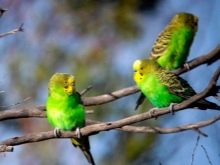
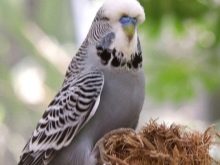

There is only one drawback of this species - even if you teach such a parrot to talk, then speech will most often be very fast and absolutely indistinct. To teach these parrots to pronounce individual words, you should start with short, but not particularly fast phrases.
They differ not only in their prevalence among breeders, but also in an extremely low price among their family. In rare cases, the cost of one individual exceeds $ 50 (depending on age, coloring, speaking ability, pedigree and the presence / absence of documents).
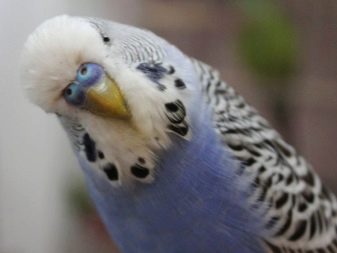

How to choose?
Almost half of the species presented above are quite rare in the CIS. Birds such as cockatoo, macaw or gray are usually very expensive and difficult to find even in private zoos or breeders. That is why prepare yourself that most of the following recommendations will apply to common species: lovebirds, cockatiels, budgerigars. Of the available and common parrots, the most trained and capable are cockatiels, as well as budgerigars. They are much slower to memorize phrases, but will try their best to repeat them after you.
It is better to buy any animals it is in specialized pet stores or nurseries. In such establishments, there is a quarantine period that any bird passes before contact with the owner. Also, when buying in a store, you should be given a certificate stating that the bird is not sick with any diseases, including those dangerous to humans.
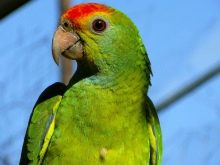
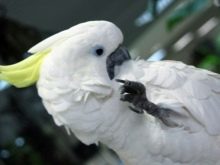
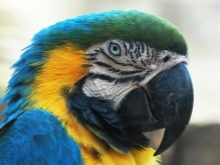
Buying birds from your hands, you will never be sure of the health of your bird. There are infectious or colds that appear only after a while. In addition, most private and non-professional breeders will not be able to provide you with any poultry documentation. When choosing a parrot, the following factors should be considered:
- life expectancy;
- the level of sociability, learning and aggressiveness;
- weight and length of an adult;
- taste preferences of the species;
- the necessary environmental conditions for care and maintenance.
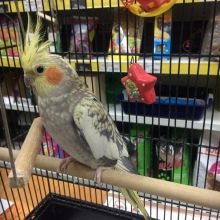

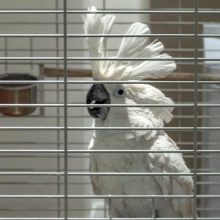
Before buying, decide for yourself - what kind of individual you want: already speaking or not. The fact is that speaking and trained individuals are much more expensive, but they are often very strongly attached to the breeder and for the first time after the purchase they can ignore or avoid the new owner.It will take a lot of time to train young and untrained individuals, but they are cheaper and will become a real friend to you during the training process.
Whatever it was, but it is the large parrots that lend themselves best to training and learning: cockatoo, macaw, gray. Therefore, if you have the opportunity and the means to purchase this particular bird, then you will not find talkers better than these breeds.
They are distinguished by the most developed intelligence, they are able to assimilate and imitate more than 1000 different words and sounds.


Large species of talking parrots are true centenarians. In rare cases, the life expectancy of the same cockatoo can reach 80 and 90 years. When buying, keep in mind that this is your pet for all time. You will have to reckon with his presence if you want to go somewhere far away on vacation or just to the country.
Many breeders are faced with the question of establishing one or two parrots. It all depends on your desires. If your goal is to breed parrots, then it is better to buy two individuals at once. If you want to teach the parrot words as quickly as possible - training for single individuals is best.

How to teach to speak?
There is no one-size-fits-all training scheme for parrots that guarantees that your pet will be able to speak after a certain amount of time. For each pet, the program should be individual and take into account its age, character, distribution area, inclinations for teaching speech.
The tips below apply to training both large and small speaking parrots.
- The most important thing in training is to build a relationship of trust between the owner and the parrot. If the bird is shy or afraid of you, you will not get anything out of it. That is why the training should be carried out a few days after the purchase, when the bird has already gotten used to the apartment a little.
- Start learning with short, monosyllabic words: house, food, key, mote, shoots. At the same time, try to reinforce the words with associations. Say "food" when you give him goodies, call him good when you praise.
- The first thing to teach your feathered friend is how to pronounce your name. The choice of a name should also be considered carefully - parrots best memorize words with letters such as "w", "w", "h", "s", "g", "k". Common names for parrots are Nyusha, Gosha, Marfusha, Petrusha, Kesha, Andryusha, Yasha, Jack, Kuzya.
- Classes must be carried out systematically, preferably at the same time every day. To feel the result faster, several sessions should be performed every day. The duration of the workouts should be at least 20 minutes each. The first is in the morning, before meals, then in the afternoon and evening, also before feeding.
- Do not demand from the parrot to memorize words momentarily, pronounce them sequentially, with pauses, give the bird some time to memorize the combination of sounds.
- Conversation training should be done in peace and quiet. Get strangers out of the room in advance, close the curtains a little. This will allow the bird to concentrate.
- It is worth teaching parrots one by one, together they will be constantly distracted, and new information will be absorbed poorly.
- You also need to learn to repeat correctly: with strict observance of accents, sounds, intonations.
- Each parrot has its own talent for learning and training. Some may learn the first words within a week, while others will strongly ignore the owner for a few more months. According to statistics, if you work with a parrot regularly, he will be able to pronounce the first phrases and words in 2-3 weeks.
- For each word you successfully learn, offer the parrot some delicacy - each of them should have a favorite fruit or vegetable. The bird must understand exactly what it is being encouraged for. Praise is also worth it - parrots perfectly catch benevolent notes in speech.
- Parrots learn well only if the same person participates in the class. They must learn to completely copy exactly his intonation and pronunciation.
- The surest sign that a bird is listening to you is a focused gaze straight into your mouth, slightly narrowed eyes and a static figure.
- Phrases and words will be better remembered if pronounced with an emotional connotation - interrogative or exclamatory.
- Connect new words and exercises to learning, but do not forget to return to old ones so that the bird does not forget them.
- Watch the mood of your talkative friend - if he is too active and does not want to study at the moment, postpone the training for a while.

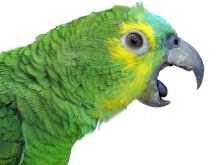
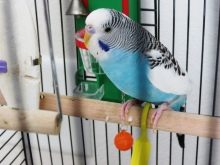
Check out the list of recommendations and tips with which you can easily teach your bird to talk.
- You should not teach your birdie swear words and foul language. At first, such a hobby may be funny, but when acquaintances and friends come to visit you and hear something offensive in their address, an awkward situation may arise.
- Never, under any circumstances, shout or call names to the parrot in case of failure or slow assimilation of some phrases. These birds perfectly feel the aggression directed against them and are able to withdraw into themselves.
- The best stimulus for the development of speech in parrots will be constant communication with the owner. Spend more time with your pet, talk to him, play, joke, laugh. All this will have a beneficial effect on the training of the bird.
- When buying a parrot, you should choose a separate place for it in the apartment in advance. There are only two conditions for this place: it must be where there are always people and must be free from drafts.
- When setting up a space for a parrot, you have two alternatives: a cage or an aviary. The cage is suitable for single individuals even if you have little space in your apartment and you are not going to buy new individuals. The aviary is more suitable for spacious apartments in the case of buying two or more parrots. It is better to buy an aviary to order - this way you can customize it specifically for your interior.
- As already mentioned, training a parrot is a long process. Do not expect that after a week of training your bird will actively speak all languages of the world. Learning individual phrases and words often takes months or even years.
- You should not buy parrots in an apartment with pets such as a cat or a dog. This applies to large species of dogs and carnivorous species of cats (Siamese cats and Main Coons, for example).
- After buying a parrot in a store or with hands, it is advisable to take it for examination to a veterinarian. This will identify diseases and infections that sellers may have been silent about.
- Large species of parrots such as macaws, cockatoos, and grays are best avoided by people without experience. They are extremely difficult to care for for the untrained breeder.
- There are cases when people have a severe form of allergy to parrots. That is why tests for such an allergic reaction should be taken before buying an individual.
- Contrary to popular myth, parrots only imitate human speech. Some words and phrases may be appropriate and pronounced at the right moments, but this does not mean that the bird understands you.
- It is believed that parrots learn best in light twilight. In this case, the bird feels protected and most calm. Therefore, the conversation lessons are advised to be held in the early morning. At the same time, parrots are in dire need of natural sunlight, in which their activity increases.
- Many parrots are wonderful imitators that can make short and loud sounds with ease. Do not be alarmed if you suddenly hear from your parrot barking or meowing just like a neighbor's dog or cat. Often, parrots can play entire sentences from TV, radio, even from your telephone conversation.
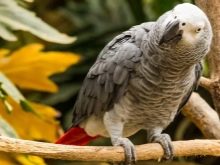
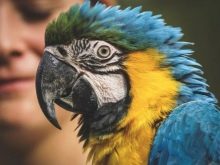
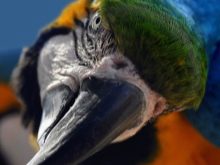
In no case do not buy a talking parrot in a fit of momentary emotions or requests from your children. Any animal requires attention, care and attention, which may turn out to be an unbearable burden for an inexperienced family.
Often talking parrots (like the cockatoo, macaw or gray) are large birds that require a lot of space. You should also take care of this.
For information on how to teach a parrot to speak, see the next video.








